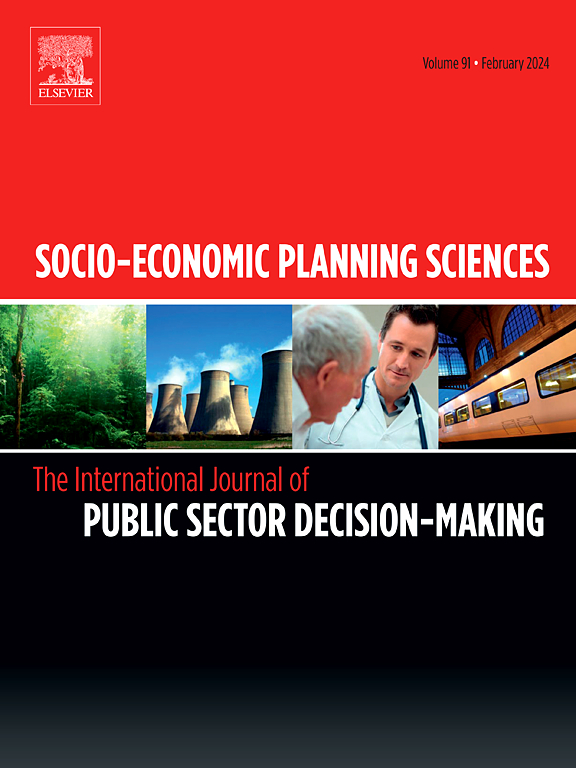An Industry 4.0 geolocation system for last mile ground disasters survivor detection: Tests and results
IF 5.4
2区 经济学
Q1 ECONOMICS
引用次数: 0
Abstract
This research introduces a novel geolocation system for survivor detection after disasters, based on the Ground Disaster Information Management System (GDIMS) guidelines. Our geolocation system is a rapid deployment, low-power, and wide-area network solution that uses tiny machine-learning-based voice activity detection to obtain timely information in challenging disaster-struck environments. The system is designed to signal survivor existence on an interactive map and further guide search and rescue efforts during the aftermath of a disaster. The impact and relevance of this technology lie in its ability to continuously monitor disasters despite disruptions from remote, steep, and/or debris disaster surroundings, nontrivial locations of possible victims, and failed transportation and communication infrastructure. This research draws from lessons learned from past events, such as the 2017 and 2010 landslides in Mocoa and Gramalote, Colombia. Results from numerical tests conducted in Gramalote, Colombia, show the technological maturity of the system and its capabilities for possible real-world implementation.

用于最后一英里地面灾害幸存者探测的工业4.0地理定位系统:测试和结果
本文介绍了一种基于地面灾害信息管理系统(GDIMS)指南的新型灾害幸存者定位系统。我们的地理定位系统是一种快速部署、低功耗、广域网解决方案,它使用基于机器学习的微小语音活动检测,在具有挑战性的灾害环境中获得及时的信息。该系统的设计目的是在交互式地图上显示幸存者的存在,并在灾难发生后进一步指导搜救工作。这项技术的影响和相关性在于,它能够持续监测灾害,尽管受到偏远、陡峭和/或碎片灾害环境、可能受害者的重要地点以及交通和通信基础设施故障的干扰。这项研究借鉴了过去事件的经验教训,例如2017年和2010年哥伦比亚莫科阿和格拉马洛特的山体滑坡。在哥伦比亚Gramalote进行的数值测试结果表明,该系统的技术成熟度及其在现实世界中可能实施的能力。
本文章由计算机程序翻译,如有差异,请以英文原文为准。
求助全文
约1分钟内获得全文
求助全文
来源期刊

Socio-economic Planning Sciences
OPERATIONS RESEARCH & MANAGEMENT SCIENCE-
CiteScore
9.40
自引率
13.10%
发文量
294
审稿时长
58 days
期刊介绍:
Studies directed toward the more effective utilization of existing resources, e.g. mathematical programming models of health care delivery systems with relevance to more effective program design; systems analysis of fire outbreaks and its relevance to the location of fire stations; statistical analysis of the efficiency of a developing country economy or industry.
Studies relating to the interaction of various segments of society and technology, e.g. the effects of government health policies on the utilization and design of hospital facilities; the relationship between housing density and the demands on public transportation or other service facilities: patterns and implications of urban development and air or water pollution.
Studies devoted to the anticipations of and response to future needs for social, health and other human services, e.g. the relationship between industrial growth and the development of educational resources in affected areas; investigation of future demands for material and child health resources in a developing country; design of effective recycling in an urban setting.
 求助内容:
求助内容: 应助结果提醒方式:
应助结果提醒方式:


